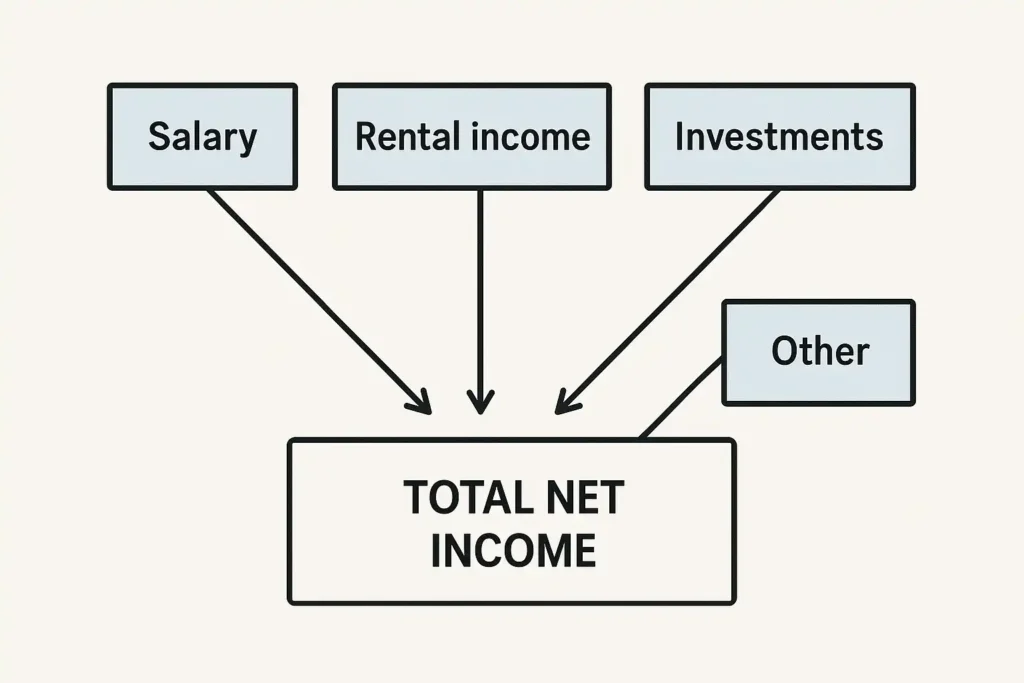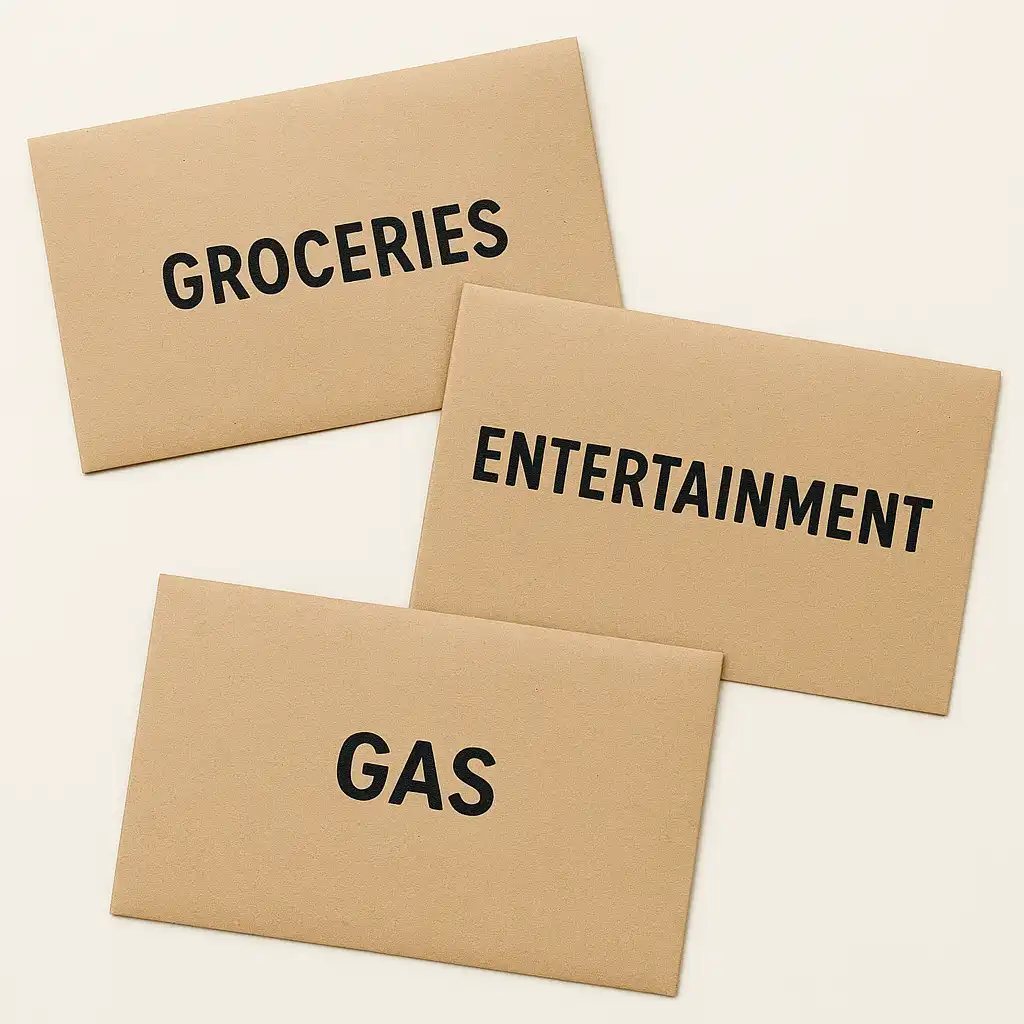Feeling like your money disappears faster than you can earn it? You’re not alone. Many people feel overwhelmed by their finances, unsure where their hard-earned cash goes each month. It can lead to stress, anxiety, and a feeling of being stuck. But what if I told you there’s a straightforward, powerful tool that can transform your relationship with money, putting you firmly in the driver’s seat? That tool is a personal budget.
Forget the restrictive, boring spreadsheets you might be imagining. Think of a personal budget as your personalized financial roadmap – a plan that helps you understand your money, make intentional choices, and confidently steer towards your financial dreams, whether that’s buying a home, traveling the world, becoming debt-free, or simply sleeping better at night knowing your finances are under control.
I’m not just talking theory here. As someone who’s helped countless individuals and businesses navigate their financial landscapes (and optimize their online presence doing it!), I’ve seen firsthand the incredible power of a well-crafted personal budget. It’s less about restriction and more about empowerment.
In this comprehensive guide, we’ll ditch the jargon and dive deep into everything you need to know about creating and maintaining a personal budget that works for you. We’ll cover:
- Why budgeting is crucial for financial well-being.
- The essential components of any effective budget.
- Different budgeting methods to suit your personality and lifestyle.
- A step-by-step process to create your first budget.
- Tools and tech to make budgeting easier.
- Common pitfalls to avoid and strategies for long-term success.
Ready to stop guessing and start directing your financial future? Let’s build your personal budget together.
Table of Contents
Why Bother with a Personal Budget? More Than Just Numbers
Before we dive into the “how,” let’s solidify the “why.” Why dedicate time and effort to creating a personal budget? The benefits extend far beyond simply tracking numbers; they impact your entire quality of life.
Gain Crystal-Clear Control Over Your Money
Knowledge is power, especially when it comes to finances. A budget illuminates exactly where your money comes from and where it goes. No more end-of-month surprises or wondering how your account balance dwindled so quickly. This clarity allows you to make conscious spending decisions aligned with your priorities, rather than operating on autopilot. You become the director of your funds, not just a spectator.
Significantly Reduce Financial Stress and Anxiety
Money worries are a leading cause of stress. Living paycheck-to-paycheck, fearing unexpected bills, or feeling buried in debt takes a heavy toll. A personal budget acts as a safety net and a plan. Knowing you have funds allocated for essentials, savings, and even emergencies provides immense peace of mind. It replaces uncertainty with predictability and anxiety with confidence.
Reach Your Financial Goals Faster and More Effectively
What do you want to achieve financially? Buy a house? Retire comfortably? Pay off student loans? Travel? Without a plan, these goals remain distant dreams. A personal budget transforms dreams into actionable targets. By intentionally allocating funds towards your specific goals each month, you create a clear path and accelerate your progress. Seeing that savings account grow or that debt shrink is incredibly motivating!
Prepare for Life’s Unexpected Curveballs (Hello, Emergency Fund!)
Life happens. Cars break down, medical issues arise, jobs can be lost. An unexpected expense can derail your finances if you’re unprepared. A core component of smart personal budgeting is building an emergency fund – typically 3-6 months of essential living expenses. Your budget helps you systematically save for this cushion, ensuring that unforeseen events become manageable inconveniences rather than full-blown financial crises.
Understanding the Core Components of a Personal Budget
At its heart, a personal budget is a simple equation: Income – Expenses = Savings/Debt Repayment. Let’s break down these essential building blocks.
Income: Knowing What’s Coming In
This is the starting point. Your income is all the money you receive. It’s crucial to base your budget on your net income (also called take-home pay) – the amount you actually receive after taxes, insurance premiums, retirement contributions, and other deductions are taken out of your paycheck.
- Identify all sources: Include your primary job, side hustles, freelance work, investment dividends, etc.
- Account for variability: If your income fluctuates (e.g., commission-based, freelance), it’s often wise to budget based on your lowest anticipated monthly income or an average over several months to be safe.

Expenses: Tracking Where Your Money Goes
This is where the real insights happen. Expenses are everything you spend money on. Understanding these is key to finding areas where you can potentially save or redirect funds. Expenses generally fall into two main categories:
- Fixed Expenses: These costs are typically the same (or very similar) each month. Examples include:
- Rent or Mortgage Payment
- Car Payment
- Insurance Premiums (Car, Health, Renter’s)
- Loan Payments (Student Loans, Personal Loans)
- Subscription Services (Streaming, Gym Membership – though these can be cut)
- Childcare
- Variable Expenses: These costs fluctuate from month to month based on your usage and choices. Examples include:
- Groceries
- Utilities (Electricity, Water, Gas – can vary seasonally)
- Transportation (Gas, Public Transport)
- Dining Out / Entertainment
- Shopping (Clothing, Hobbies)
- Personal Care
It’s also helpful to distinguish between Needs (essentials like housing, food, basic utilities, transportation to work) and Wants (non-essentials like dining out, entertainment, premium subscriptions, latest gadgets). This distinction is vital when you need to make adjustments to your spending.
Savings & Debt Repayment: Planning for Your Future
This isn’t just what’s left over; it’s a category you actively plan for within your personal budget. This includes:
- Emergency Fund Contributions: Building that safety net.
- Retirement Savings: Allocating funds to 401(k)s, IRAs, or other retirement accounts.
- Goal-Specific Savings: Saving for a down payment, vacation, new car, etc.
- Extra Debt Payments: Allocating funds beyond minimum payments to pay down high-interest debt faster (like credit cards or personal loans).
Ideally, your income should cover all your expenses and allow you to allocate funds towards these crucial future-oriented categories.
Popular Personal Budgeting Methods: Finding Your Perfect Fit
There’s no single “best” way to budget; the most effective method is the one you’ll actually stick with. Here are a few popular approaches:
The 50/30/20 Rule: Simple and Balanced
A great starting point for beginners. This method divides your net income into three categories:
- 50% for Needs: Covers essentials like housing, utilities, food, transportation, insurance.
- 30% for Wants: Covers discretionary spending like dining out, hobbies, entertainment, shopping.
- 20% for Savings & Debt Repayment: Goes towards building your emergency fund, saving for goals, investing, and paying down debt beyond minimums.
- Pros: Easy to understand and implement, provides a clear framework.
- Cons: May require adjustments based on income level and cost of living; the lines between Needs/Wants can sometimes blur.
Zero-Based Budgeting: Every Dollar Has a Job
With this method, you assign every single dollar of your income to a specific category (expenses, savings, debt repayment) until your Income minus Outflows equals zero.
- Formula: Income – Expenses – Savings – Debt Payments = $0
- Pros: Highly detailed and intentional, ensures no money is unaccounted for, promotes conscious spending.
- Cons: Can be time-consuming, requires meticulous tracking, might feel restrictive initially.
The Envelope System (Cash or Digital): Tangible Control
This classic method involves allocating specific amounts of cash into labeled envelopes for different variable spending categories (e.g., Groceries, Dining Out, Fun Money). Once the cash in an envelope is gone, you stop spending in that category for the month. Digital versions use apps or separate accounts to mimic this.
- Pros: Excellent for controlling overspending in specific areas, makes spending feel very tangible.
- Cons: Primarily works for variable expenses, requires discipline, carrying cash can be inconvenient or feel unsafe for some, digital versions require setup.

The Pay-Yourself-First Method: Prioritizing Savings
This approach focuses on prioritizing savings and investment goals before dealing with other expenses. Decide how much you want to save/invest each month, automate those transfers right after you get paid, and then budget the remaining money for your expenses.
- Pros: Ensures savings goals are met consistently, simple to automate.
- Cons: Still requires tracking expenses to ensure you don’t overspend the remaining amount.
Reverse Budgeting: Simplified Saving Focus
Similar to Pay-Yourself-First, but even simpler. Decide on your savings/investment amount, automate it, and then freely spend the rest without meticulous category tracking (as long as essentials are covered).
- Pros: Very low maintenance, good for those who dislike detailed tracking.
- Cons: Requires strong discipline to not overspend the remainder, less insight into specific spending patterns.
Key Takeaway: Experiment! You might even combine elements from different methods to create a hybrid system that perfectly suits your needs and personality.
Step-by-Step Guide: Creating Your First Personal Budget
Ready to roll up your sleeves? Here’s a practical, step-by-step process to build your initial personal budget:
Step 1: Calculate Your Total Net Income
Gather your pay stubs or check bank deposits for the last few months. Calculate your consistent monthly take-home pay. If your income varies, calculate an average or use the lowest amount you reasonably expect to receive.
Step 2: Track Your Spending (The Moment of Truth!)
This is often the most eye-opening step. You need to understand where your money is actually going right now. Track every expense for at least one month (two or three is even better for accuracy). You can do this using:
- A dedicated budgeting app that connects to your accounts.
- Reviewing bank and credit card statements meticulously.
- A spreadsheet where you manually log expenses.
- A simple notebook. Be honest and thorough! Include that morning coffee, the small online purchase, everything.
Step 3: Categorize Your Expenses
Once you have a list of expenses, group them into meaningful categories (e.g., Rent/Mortgage, Groceries, Utilities, Transportation, Insurance, Dining Out, Entertainment, Personal Care, Debt Payments, Subscriptions, Miscellaneous). Differentiate between fixed and variable costs.
Step 4: Set Realistic Financial Goals
What do you want your money to do for you? Define specific, measurable, achievable, relevant, and time-bound (SMART) goals. Examples:
- Save $5,000 for an emergency fund in 12 months.
- Pay off a $2,000 credit card balance in 6 months.
- Save $300/month for a vacation next year. Having clear goals makes budgeting purposeful.
Step 5: Build Your Budget Plan (Choose Your Method)
Based on your income, expenses, goals, and personality, choose a budgeting method (50/30/20, Zero-Based, etc.) or create your own framework. Decide how much you want to allocate to each category. This is where you make intentional choices.
Step 6: Compare Plan vs. Reality & Adjust
Now, compare your planned budget allocations (Step 5) with your actual tracked spending (Step 3). Are there discrepancies?
- Spending more than planned in some areas? Identify where you can cut back (e.g., fewer dinners out, cancel unused subscriptions) or if you need to allocate more realistically to certain categories.
- Spending less than income? Awesome! Allocate that surplus towards savings, debt repayment, or investment goals.
- Spending more than income? This requires significant adjustments. Prioritize needs, drastically cut wants, or explore ways to increase income. This adjustment phase is crucial. Your first budget draft is rarely perfect.
Step 7: Review and Refine Regularly (Budgeting is Dynamic!)
A personal budget isn’t a one-time task; it’s an ongoing process. Set aside time each week or month to:
- Track your ongoing spending against your budget.
- Review upcoming expenses.
- Make adjustments as needed (life changes, income changes, goals evolve). Regular check-ins keep your budget relevant and effective.
Tools and Tech to Simplify Your Personal Budgeting Journey
While you can budget with just pen and paper, technology offers powerful tools to streamline the process.
Budgeting Apps
Numerous apps connect securely to your bank accounts and credit cards, automatically track spending, categorize transactions, help you set goals, and provide visual reports. Many offer features aligned with specific budgeting methods. Examples include YNAB (You Need A Budget), Mint, PocketGuard, Goodbudget (digital envelope system).
- Pros: Automation saves time, real-time insights, accessible anywhere.
- Cons: Some have subscription fees, reliance on technology, potential privacy concerns for some users.
Spreadsheets (DIY Power)
If you prefer more control or don’t want to link bank accounts, spreadsheets (like Google Sheets or Microsoft Excel) are fantastic. You can create a personalized budget template or download one online.
- Pros: Highly customizable, free or low-cost, full control over data.
- Cons: Requires manual data entry (can be tedious), need basic spreadsheet skills.
Pen and Paper (The Classic Approach)
Sometimes, the simplest method is best. Using a dedicated notebook or planner to track income, list expenses, and manage budget categories can be very effective, especially for visual or tactile learners.
- Pros: Simple, no technology needed, very tangible connection to your numbers.
- Cons: Entirely manual, requires calculations by hand, can be harder to analyze trends over time.
Choose the tool or combination of tools that makes budgeting feel less like a chore and more like an integrated part of managing your finances effectively.
Common Personal Budgeting Pitfalls (and How to Avoid Them)
Starting a personal budget is great, but sticking to it requires navigating some common hurdles. Awareness is the first step to overcoming them.
Being Too Restrictive or Unrealistic
Trying to cut spending too drastically or setting impossibly tight limits often leads to burnout and abandoning the budget altogether.
- Solution: Start with small, achievable changes. Build flexibility into your budget. Allow for some “fun money” or discretionary spending so you don’t feel deprived. Focus on progress, not perfection.
Forgetting Irregular or Occasional Expenses
It’s easy to budget for monthly bills, but what about annual subscriptions, holiday gifts, car maintenance, or semi-annual insurance payments? These can wreck your budget if unplanned.
- Solution: Create “sinking funds.” Estimate the annual cost of these irregular expenses, divide by 12, and save that amount each month in a separate category or account. When the bill comes due, the money is already there.
Not Tracking Spending Accurately (or At All!)
Creating a budget is only half the battle. If you don’t consistently track your actual spending against your plan, the budget becomes meaningless.
- Solution: Choose a tracking method that works for you (app, spreadsheet, notebook) and make it a habit. Set reminders, review spending weekly, and be honest with yourself.
Giving Up Too Soon After a Setback
You will overspend in a category sometimes. Life happens. One bad week or month doesn’t mean your budget has failed or that you should quit.
- Solution: Acknowledge the slip-up, understand why it happened, adjust the budget for the rest of the month if necessary, and get back on track next month. Budgeting is a marathon, not a sprint. Forgive yourself and keep going.
Not Including “Fun Money”
A budget that has no room for enjoyment is unsustainable. Depriving yourself completely often leads to rebellion spending later.
- Solution: Explicitly allocate a reasonable amount for hobbies, entertainment, dining out, or whatever brings you joy. Knowing you have permission to spend in these areas makes sticking to limits elsewhere easier.
Making Your Personal Budget Stick: Long-Term Success Strategies
Creating the budget is the start; integrating it into your life long-term is where the real transformation happens.
Schedule Regular Budget Check-ins
Treat your budget review like an important appointment. Set aside 15-30 minutes each week or bi-weekly to update tracking, review progress, and plan for the upcoming period. Consistency is key.
Automate Savings and Bill Payments
Automation is your best friend. Set up automatic transfers to your savings and investment accounts right after payday (Pay Yourself First!). Automate bill payments for fixed expenses to avoid late fees and ensure they’re covered.
Celebrate Small Wins Along the Way
Did you stick to your grocery budget? Pay off a small debt? Reach a mini-savings goal? Acknowledge and celebrate these victories! Positive reinforcement helps build momentum and keeps you motivated.
Find an Accountability Partner (Optional but Helpful)
Sharing your goals and progress with a trusted friend, family member, or partner can provide support and encouragement. Just knowing someone else is aware of your commitment can make a difference.
Be Flexible and Adaptable
Your life, income, and goals will change over time. Your personal budget needs to adapt too. Review and adjust your budget significantly at least once or twice a year, or whenever a major life event occurs (new job, marriage, baby, move).
Frequently Asked Questions (FAQ) about Personal Budgets
Let’s tackle some common questions people have when starting their budgeting journey.
Q1: How long does it take to create a personal budget?
- A: The initial setup (tracking spending, categorizing, building the plan) might take a few hours spread over a few days or weeks, especially the first time. The ongoing maintenance (weekly check-ins) should only take 15-30 minutes.
Q2: What if my income is irregular or unpredictable?
- A: Budgeting with variable income requires extra planning. Try budgeting based on your lowest expected income month. When you have higher income months, use the extra to bolster your emergency fund, pay down debt aggressively, or save for large, irregular expenses. Zero-based budgeting can be helpful here to allocate every dollar when it comes in.
Q3: Is it okay to use a credit card while budgeting?
- A: Yes, if you treat it like a debit card. Only charge what you know you have the cash to cover in your budget, and pay the balance off in full every month to avoid interest. If credit cards tempt you to overspend, consider switching to cash or debit temporarily while you build discipline.
Q4: I feel overwhelmed. Where’s the absolute best place to start?
- A: Start simple! Don’t try to perfect everything at once. Begin by just tracking your spending for one month without judgment. Understanding where your money currently goes is the most powerful first step. Then, try a simple method like the 50/30/20 rule.
Q5: Do I really need a budget if I make good money and pay my bills on time?
- A: While you might not need a budget for survival, it’s still incredibly beneficial for optimizing your finances. A budget helps ensure your money is working effectively towards your long-term goals (like early retirement, significant investments, or major purchases) rather than just being spent passively. It maximizes your financial potential.
Your Financial Future Starts Now: Take Control with Your Personal Budget
Creating and sticking to a personal budget is arguably one of the most impactful steps you can take towards achieving financial wellness and peace of mind. It’s not about restriction; it’s about awareness, intention, and empowerment. It’s about telling your money where to go, instead of wondering where it went.
By understanding your income and expenses, choosing a method that fits your life, setting clear goals, and consistently reviewing your progress, you transform your finances from a source of stress into a tool for building the life you desire.
Don’t just read this guide – act on it! What’s the one step you can take today to start your personal budgeting journey?
- Will you download a budgeting app?
- Will you commit to tracking your spending for the next week?
- Will you calculate your net income and list your fixed expenses?
Pick one small action and do it now. The journey to financial freedom begins with that single step. Take control, build your roadmap, and start navigating towards a brighter financial future today. You’ve got this!
Consumer Financial Protection Bureau (CFPB) – Budgeting Tools & Resources:
https://www.consumerfinance.gov/consumer-tools/budgeting/
(US-focused government resource for general budgeting guidance)
MoneyHelper – Budgeting Section:
https://www.moneyhelper.org.uk/en/everyday-money/budgeting
(UK-focused government-backed resource)
National Endowment for Financial Education (NEFE):
https://www.nefe.org/
(Reputable non-profit for financial literacy resources)




